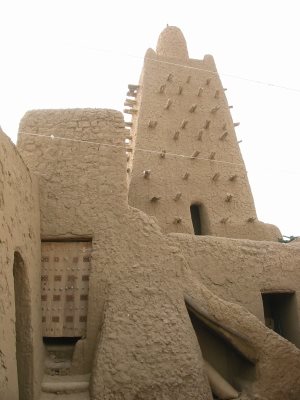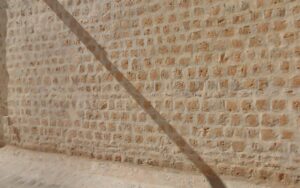
About Mission Culturelle de Tombouctou
Description
The Mission Culturelle de Tombouctou stands as a testament to Mali’s rich cultural heritage and its commitment to preserving the invaluable treasures of the past. As I wandered through this remarkable institution, I couldn’t help but feel a sense of awe at the sheer magnitude of history contained within its walls. It’s not just a museum or a cultural center – it’s a living, breathing archive of Timbuktu’s glorious past and a beacon of hope for its future.
The mission serves as the custodian of Timbuktu’s ancient manuscripts, some dating back to the 13th century. These fragile documents, covered in intricate Arabic calligraphy, offer a fascinating glimpse into the intellectual and spiritual life of medieval West Africa. I was particularly struck by the diversity of subjects covered in these manuscripts – from astronomy and mathematics to poetry and Islamic jurisprudence.
But the Mission Culturelle de Tombouctou is more than just a repository of old books. It’s a vibrant center of learning and cultural exchange, where local scholars and international researchers come together to study, preserve, and share the wealth of knowledge contained in these ancient texts. The dedication of the staff here is truly inspiring – I watched in amazement as conservators meticulously restored damaged manuscripts, using techniques passed down through generations.
One of the most impressive aspects of the mission is its commitment to making this knowledge accessible to everyone. They’ve undertaken ambitious digitization projects, ensuring that these priceless documents can be studied and appreciated by people all over the world. It’s heartening to see how technology is being used to bridge the gap between the past and the present.
The mission also plays a crucial role in promoting and preserving Timbuktu’s unique cultural heritage beyond just the manuscripts. From traditional music and dance to local crafts and architecture, the institution works tirelessly to keep the city’s rich cultural traditions alive and thriving.
Visiting the Mission Culturelle de Tombouctou is like stepping into a time machine. It offers a rare opportunity to connect with the intellectual legacy of a city once known as the “Athens of Africa.” Whether you’re a history buff, a culture enthusiast, or simply curious about the world, this place is sure to leave a lasting impression.
Key Features
• Ancient manuscript collection: Housing thousands of priceless documents from Timbuktu’s golden age
• Conservation laboratory: Where skilled experts work to restore and preserve fragile manuscripts
• Digital archive: A growing collection of digitized texts accessible to researchers worldwide
• Exhibition space: Rotating displays showcasing different aspects of Timbuktu’s cultural heritage
• Research facilities: Resources for scholars studying the manuscripts and local history
• Educational programs: Workshops and lectures on Timbuktu’s history and cultural significance
• Craft demonstrations: Showcasing traditional local arts and crafts
• Architectural significance: The mission itself is housed in a beautiful example of Sudano-Sahelian architecture
• Cultural events: Regular performances of traditional music and dance
• Guided tours: Knowledgeable staff offering insights into the collection and its importance
Best Time to Visit
Choosing the right time to visit the Mission Culturelle de Tombouctou can make a big difference in your experience. Trust me, I learned this the hard way on my first trip!
The best time to visit is generally during the cooler months, from November to February. The weather is much more pleasant during this period, with temperatures ranging from the mid-20s to low 30s Celsius (70s to 90s Fahrenheit). This makes exploring the mission and the surrounding area much more comfortable.
I’d particularly recommend planning your visit for January if possible. This is when the famous Festival au Désert takes place nearby, and the Mission often hosts special events and exhibitions to coincide with the festival. It’s a great opportunity to experience both the historical and contemporary aspects of Timbuktu’s culture.
That being said, if you’re really interested in the conservation work being done at the mission, you might consider visiting during the drier months of March to May. This is when a lot of the restoration work on the manuscripts takes place, and you might get a chance to see the conservators in action.
Whatever you do, try to avoid visiting during the rainy season (June to September) or the hottest months (April to June). The rain can make travel difficult, and the extreme heat can be uncomfortable and potentially dangerous if you’re not used to it. Plus, some of the mission’s activities might be limited during these times.
Also, keep in mind that the mission observes Muslim holidays, so it might have different hours or be closed during major religious festivals like Eid al-Fitr or Eid al-Adha. It’s always a good idea to check ahead and plan accordingly.
How to Get There
Getting to the Mission Culturelle de Tombouctou can be quite an adventure in itself! As someone who’s made the journey a couple of times, I can tell you it’s not always easy, but it’s definitely worth the effort.
The first thing you need to know is that Timbuktu is pretty remote. There’s no direct international flight to the city, so you’ll need to make your way to Bamako, the capital of Mali, first. From there, you have a few options:
1. Flying: This is the quickest and easiest way to reach Timbuktu. There are regular flights from Bamako to Timbuktu’s small airport. The flight takes about 2 hours and offers some breathtaking views of the Sahel landscape. However, flights can be expensive and are sometimes cancelled or delayed due to weather conditions.
2. Boat: If you’re up for a real adventure (and have some time to spare), you can take a boat along the Niger River. The journey from Mopti to Timbuktu takes about 3 days and is a fantastic way to see rural Mali. Just be prepared for basic conditions – this isn’t a luxury cruise!
3. Road: Technically, you can drive to Timbuktu, but I wouldn’t recommend it unless you’re very experienced with desert driving and have a reliable 4×4 vehicle. The roads are often in poor condition and can be dangerous.
Once you’re in Timbuktu, the Mission Culturelle is relatively easy to find. It’s located in the center of the city, not far from the Djinguereber Mosque. Most locals will be able to point you in the right direction, or you can hire a guide to show you around.
A word of caution: the security situation in Mali can be unpredictable. Always check the latest travel advisories before planning your trip and consider hiring a reputable local guide or joining an organized tour for added safety.
Remember, half the fun is in the journey! The challenges of getting to Timbuktu make the experience of visiting the Mission Culturelle all the more rewarding.
Tips for Visiting
Alright, let’s talk about making the most of your visit to the Mission Culturelle de Tombouctou. I’ve picked up a few tricks over my visits, and I’m more than happy to share them with you!
First things first: dress appropriately. Timbuktu is a conservative Muslim city, so it’s important to respect local customs. That means covering your shoulders and knees, regardless of gender. And trust me, loose, light-colored clothing isn’t just culturally appropriate – it’ll also help you stay cool in the Saharan heat.
Speaking of heat, hydration is key. Bring a refillable water bottle and drink more water than you think you need. The dry desert air can dehydrate you faster than you might expect.
Now, about the Mission itself. If possible, try to arrange a guided tour in advance. The staff are incredibly knowledgeable and can provide insights that you might miss on your own. Don’t be shy about asking questions – they’re usually more than happy to share their expertise.
Photography is generally allowed in most areas of the Mission, but always ask for permission before taking pictures, especially of the manuscripts or people. Some areas might be off-limits for photography to protect sensitive documents.
If you’re interested in the conservation work, try to time your visit for the morning hours when the conservators are usually working. It’s fascinating to watch them at work, and they sometimes offer demonstrations if you express interest.
Don’t rush your visit. There’s a lot to take in, and the Mission has a peaceful atmosphere that’s worth savoring. I’d recommend setting aside at least a couple of hours to fully appreciate everything.
Consider purchasing some locally made crafts from the Mission’s gift shop if you’re looking for souvenirs. It’s a great way to support the local community and take home a piece of Timbuktu’s living culture.
Lastly, remember that you’re visiting a place of great historical and cultural significance. Treat the manuscripts and artifacts with respect, and be mindful of your impact on this fragile heritage site.
Oh, and one more thing – don’t forget to look up! The building itself is a beautiful example of traditional Sudano-Sahelian architecture, with intricate patterns and designs that are easy to miss if you’re too focused on what’s at eye level.
With these tips in mind, you’re all set for an unforgettable visit to one of Africa’s most important cultural institutions. Enjoy your journey into the heart of Timbuktu’s intellectual heritage!

